This is a free fortnightly newsletter about the New Zealand Net.
If you would like to be notified by email when a new edition is published, please contact ZL1NZ.
Browse our Newsletter Archive and List of Net Tips.
Featured key
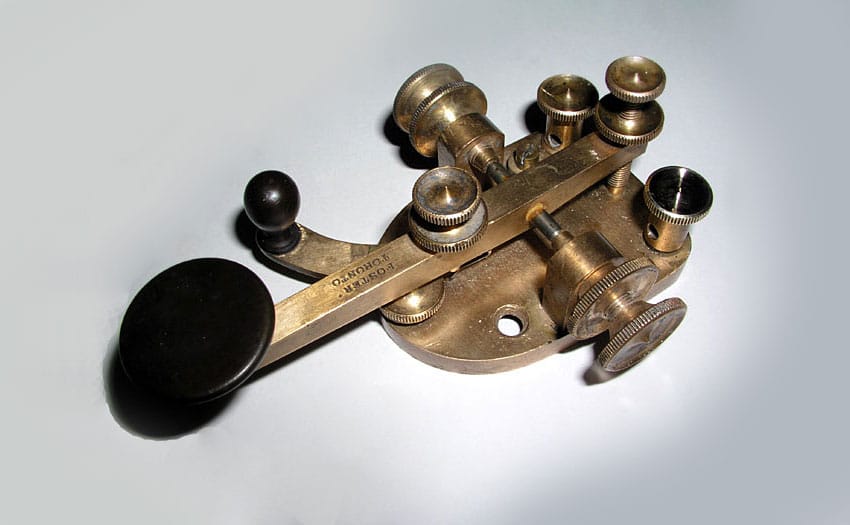
Photo: W1TP Telegraph Museum
This lovely Canadian key is one of hundreds featured in Tom Perera’s fabulous Online Telegraph Museum. Tom describes the key thus:
“This extremely early all-brass straight lever key is labeled: FOSTER, TORONTO and it appears to be a very early key made in the 1850s. Several keys have turned up in the last 10 years that are similar to this key but none of them has carried a maker’s name.”
(Later in this NZ Net News you’ll find a video presentation by Tom describing his early years in amateur radio.)
* If you have an interesting key for this feature, please send a nice clear photo and a few words describing it.
Quick notes
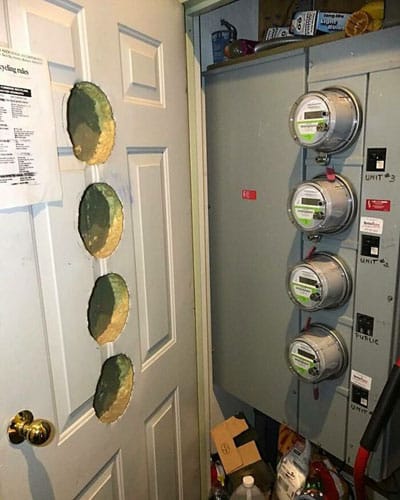
Contest wins for NZ Netters
- Congratulations to Barry ZL2LN who took first place in the ZL Sprints CW section. Full results.
- Congratulations to Grant ZL2GD who won the Memorial Contest CW section and to Gerard ZL2GVA who won the QRP CW section. Full results.
How to get a bigger shack. I recently sold an AR-88D receiver and cannot get over how much bigger my shack feels! This 45kg receiver sat on a pedestal just inside the shack door (there was no other space for it). I was only storing it there until I could find a new home for it – which took about 3 years. Every time I entered the shack I had to side-step around it to get to the operating chair. Now, when I enter the shack in the dark, I still automatically do the side-step, turn on the light and then look around in surprise at my spacious shack.
The photo has another useful space-saving idea. (Not my shack!)
Photo flashback
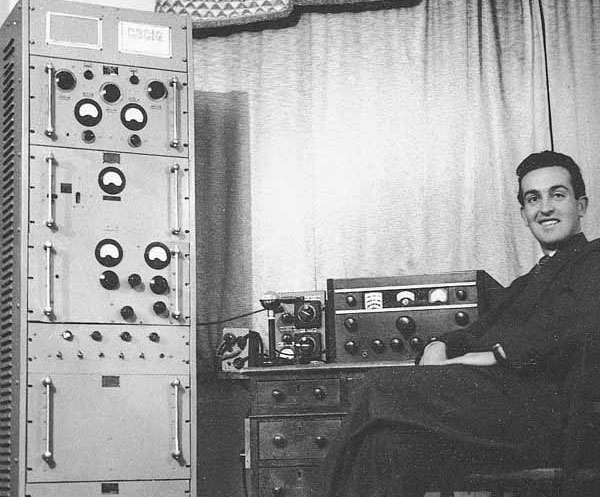
Henry Lewis G3GIQ in 1953. Henry’s receiver is an AR-88 of course. He first saw one in 1948 when he visited the shack of G4KG, who would become his mentor – and he decided that one day he would own one too.
“In 1952 I built a transmitter based on a T1131 which I had worked on in the RAF. It ran 150W input to two TZ-40 tubes, modulated by another pair. The two lower chassis are power supplies, each weighing about 200lb. The whole rig weighed in at about 600lb, and sat on my bedroom floor – my parents were saints, and obviously, they liked to live dangerously! I built it from memory, and of course had to modify the RF and exciter decks. These, the modulator, power supplies, and cabinet were all bought from separate surplus suppliers.”
Henry died in 2011 but his website is still online and is worth a visit.
ZL1BBW’s keys
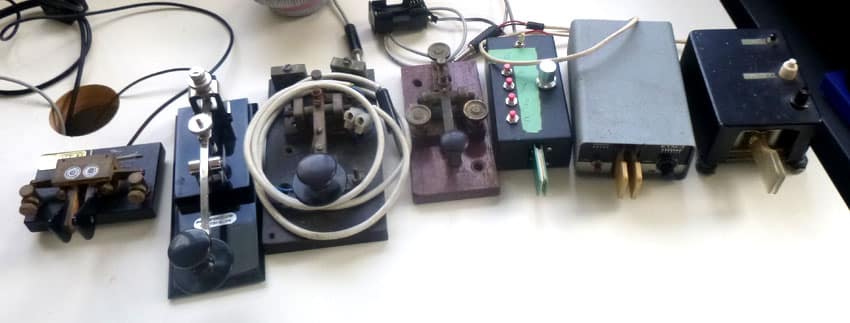
Photo: ZL1BBW
In the midst of the annual shack clean, I thought I would get my motley collection of keys all together.
The RAF D-Type goes right back to my first days as an amateur, I think we bought it in GWM Radio in Worthing.
The rough-looking key at the end, in the black fablon cover, was my personal key that I used to lug around from point to point at GKA.
The touch key is great, but you need safebreaker’s finger tips to get it to work properly.
Concrete for the new tower is arriving tomorrow (hopefully) so soon be back on the bands.
Cheers,
Gavin ZL1BBW
RSGB news in Morse
GB2RS is the callsign used by over 100 stations around the UK and the Crown Dependencies to transmit the weekly Radio Society of Great Britain news bulletin every Sunday. The service has been running continuously since 1955.
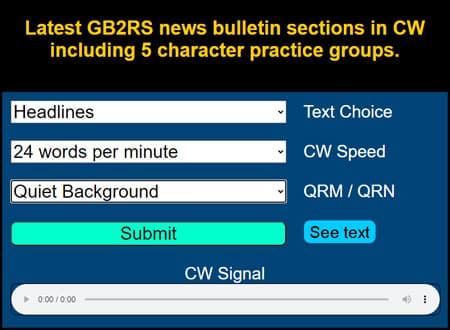 Volunteer newsreaders are permitted to operate with this callsign under a special Notice of Variation to their own licence, which is issued by the UK regulator. It is a very unusual call sign because it is licensed for broadcast, rather than two-way communication.
Volunteer newsreaders are permitted to operate with this callsign under a special Notice of Variation to their own licence, which is issued by the UK regulator. It is a very unusual call sign because it is licensed for broadcast, rather than two-way communication.
What seems very odd to me, however, is that this radio news service uses SSB, AM, FM, DMR, DV, DATV and Podcasts – but not CW!
Fortunately, Graham G4JBD has created an app that enables anyone to listen to the RSGB news in Morse.
And, to make sure you get the same experience as listening over the air, Graham’s app offers your choice of QRM/QRN levels. 🙂
How my feedline got screwed
On 13 September (maybe not an auspicious date, in hindsight) the crew arrived to put a new roof on the ZL1NZ radio shack. It went like this:
Me: “Hi guys, I just want to point out this VERY important radio antenna cable that runs out under the bottom edge of the roofing iron. Please be VERY careful not to damage it.”
Me (a little later): “Please remember the cable. It’s VERY expensive, OK?”
Me (still later): “Guys, when you put the new iron on, please be sure this VERY important cable is positioned where you won’t be driving a roofing screw, OK?”
Me (a few hours later): “There’s a screw right through my cable!”
Roofer: “Nah mate, that’s impossible. Lemme take a look.”
Roofer: “Sorry mate.”
The cable is RG213 that feeds (or used to feed) my yagi for 40, 20, 15 and 10 metres. I spotted the damage only an hour before I would have tuned up the rig to check into the VKCW Net on 14.049 MHz.
Repairs may take a while. Waiting until my blood pressure returns to normal.

Morse challenge
Here is a recording I made of San Francisco Radio KPH on 8 MHz during their annual Night of Nights operation in July.
At this time, they were sending a series of messages from well-wishers.
Your challenge is to listen to the following message and tell me what is being kept alive.
Please send your answer to ZL1NZ via radiogram or email.
Answer to previous Morse Challenge
The answer was Poughkeepsie. Correct answers were received from ZL1ANY, ZL1AYN, VK2MZ, VK3DRQ.
Also, my apologies to ZL1ANY for omitting him from the list of correct responders in the previous NZ Net News.
Video: Tom Perera’s story
Anyone reading NZ Net News is probably well aware of the extensive online museum of telegraphy created by Tom Perera W1TP.
In the following presentation for the Antique Wireless Association, Tom talks about how he got started in amateur radio in the 1950s in New York City (worth watching just for the description of his stealth antenna). He also shares his thoughts on how to keep the hobby alive.
Advertising archive
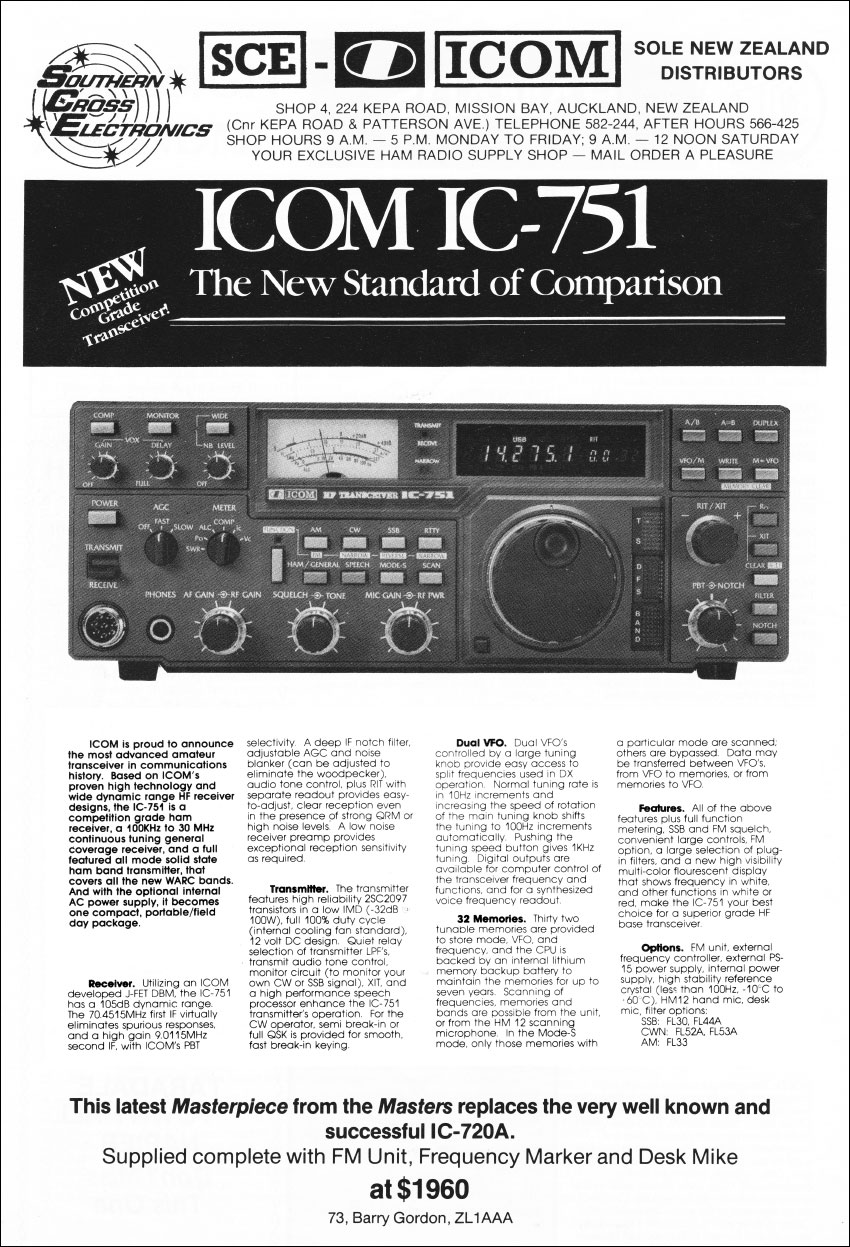
Break-In magazine, July 1983
Suggestions?
If you have suggestions on how to make the NZ Net better, or things you’d like to see covered in these updates, please contact ZL1NZ. You might even like to write something for the newsletter.
Thanks for reading, and I hope to hear you soon on the NZ Net!
—
Neil Sanderson ZL1NZ, Net Manager
New Zealand Net (NZ NET)
3535.0 kHz at 9pm NZT Mon-Fri


